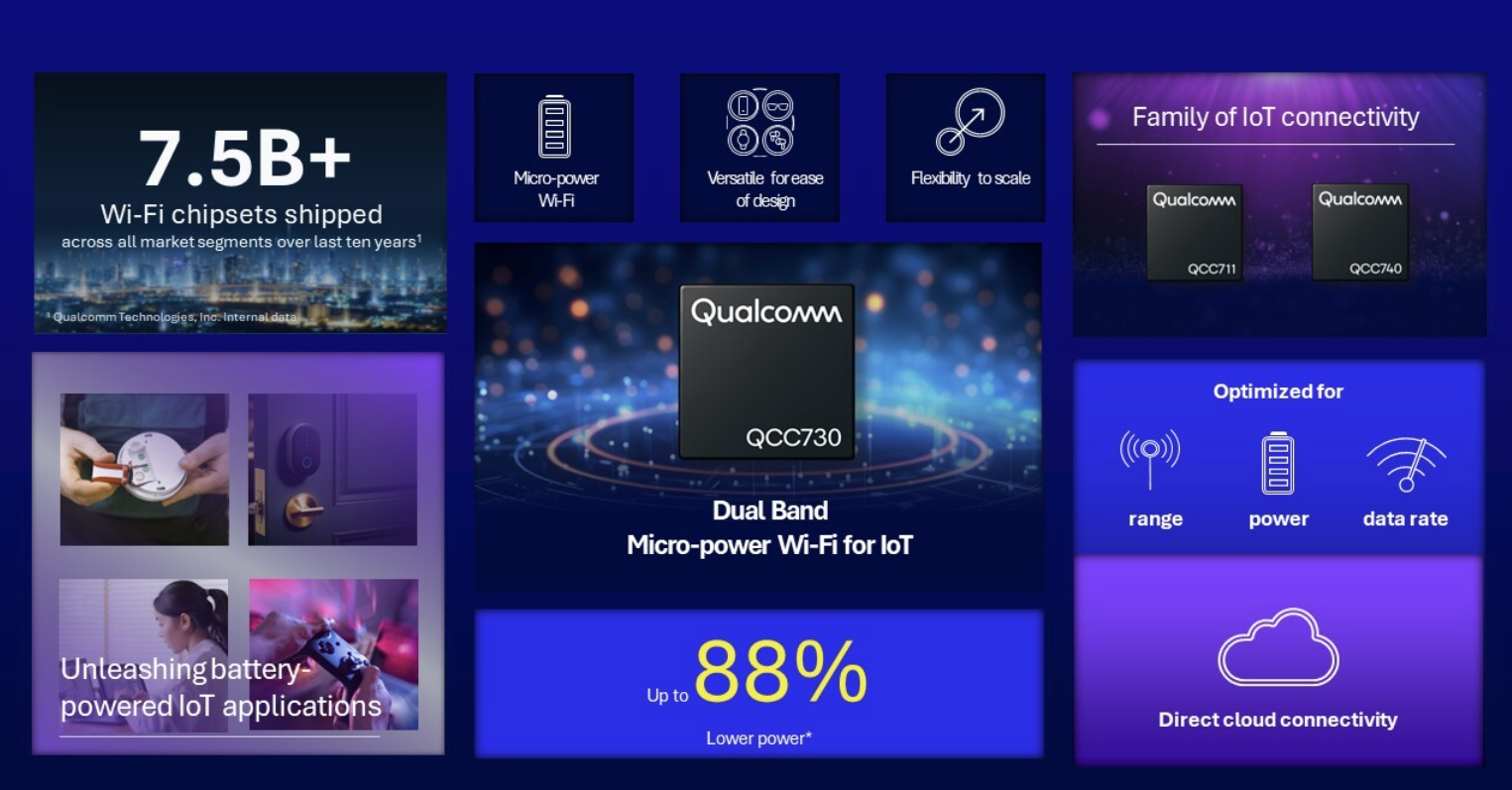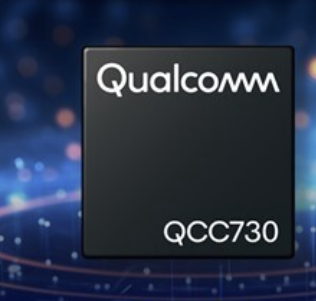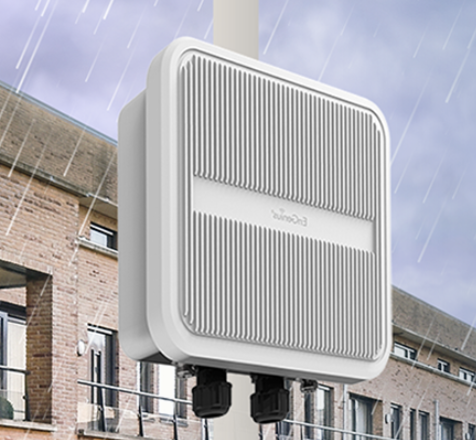
By Claus Hetting, Wi-Fi NOW CEO & Chairman
This week at Embedded World in Nuremberg, Germany, Wi-Fi chipset leader Qualcomm released a raft of products with a new ultra-low-power Wi-Fi SoC dubbed QCC730 topping the list. Qualcomm says the new Wi-Fi SoC represents a new category of silicon platforms likely to compete fiercely with Bluetooth for top spot among battery-operated IoT devices and across a range market segments.
Embedded systems – including for IoT – maybe the most unruly and fragmented of all electronic hardware segments with hundreds if not thousands of companies participating in the sprawling Embedded World event in Nuremberg, Germany, this week. There are still plenty of choices when it comes to what wireless technology to select for connecting your IoT device but perhaps the right choice became a little clearer this week after Qualcomm released its new SoC for Wi-Fi IoT.

Qualcomm says its new QCC730 Wi-Fi 4 SoC operates at 88% lower power consumption compared to previous generation chips, which means the new chip is poised to disrupt a number of segments including industrial and consumer IoT. The new chip is all about connecting battery-powered devices, which until now has largely been the domain of Bluetooth. Qualcomm says that may well be about to change.
“With this chip we’re unlocking the true potential of battery-operated connectivity with Wi-Fi. We believe it will be disruptive because Wi-Fi inherently offers big benefits, such as direct to Cloud connectivity, no need for a hub, and better performance including for example lower latency. Our new platform will be a critical building block for creating a new generation of high-performance, battery-powered wireless IoT devices for gaming, healthcare, smart home, and industry,” says Shishir Gupta, Senior Director Product Management at Qualcomm.
Technically the new platform is a dual-band 2.4/5 GHz Wi-Fi 4 device wrapped into a tiny package (3.3 x 3.58 x 0.55 mm) that delivers connectivity up to MCS3-level coding (about 60 Mbps at 40 MHz channels). Qualcomm points to game controllers, wireless door locks, ambient sensors, and patient monitors as obvious use cases although many more will emerge, Shishir Gupta says. A significant part of the new chip’s secret sauce is selectable power modes and innovative power management, he says.
The new chip is no doubt compelling technology but also leaves Qualcomm with the formidable challenge of getting it to market within a long-tail IoT ecosystem featuring hundreds if not thousands of device manufacturers. Qualcomm says they’re making integration easy with an open source SDK as well as Qualcomm’s Connectivity Integrated Development Environment (IDE) based on MicrosoftVisual Studio Code. “We’re also right now launching a training program to make sure our field engineers are ready to serve the broad IoT ecosystem,” Shishir Gupta says.
/Claus.









